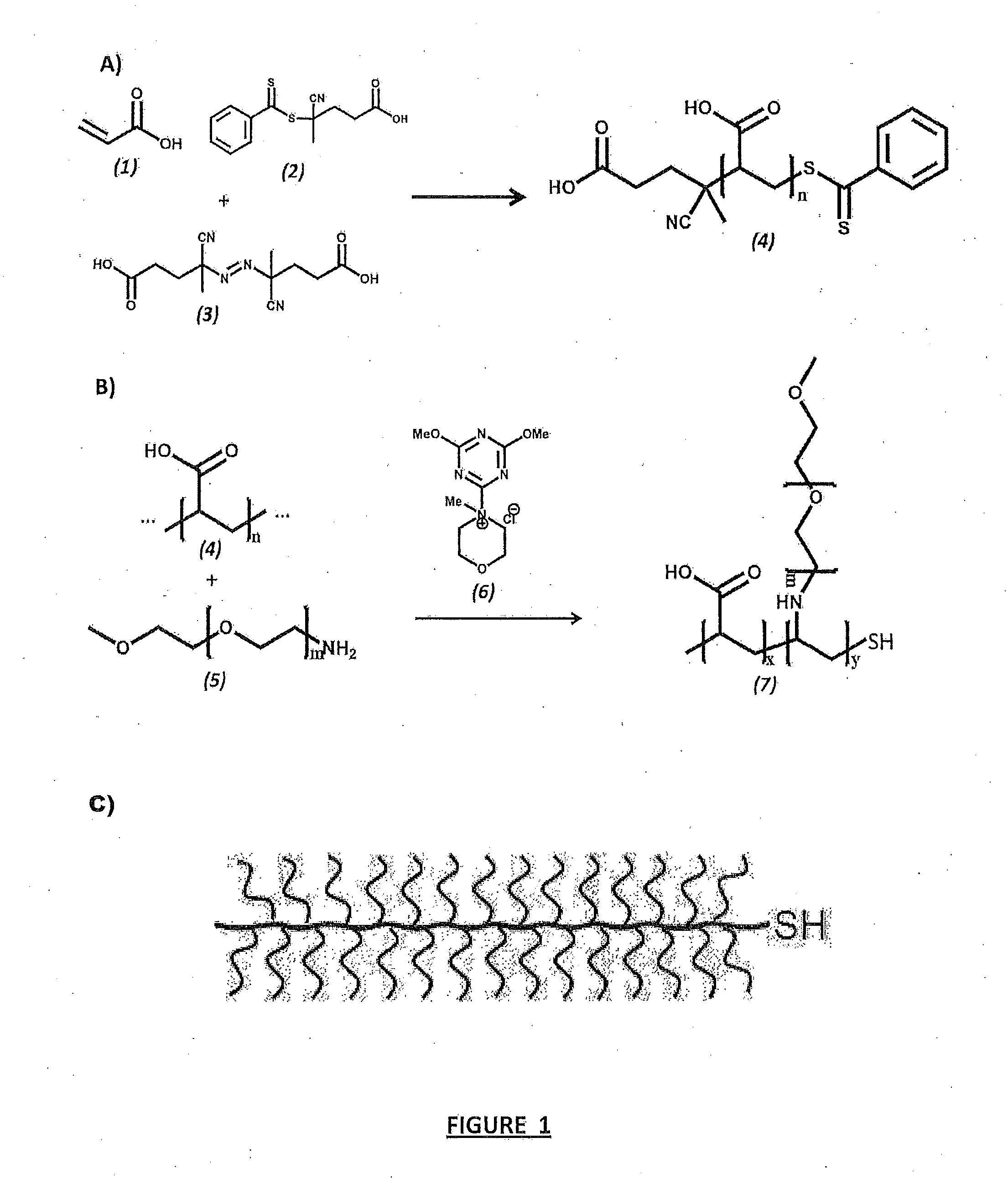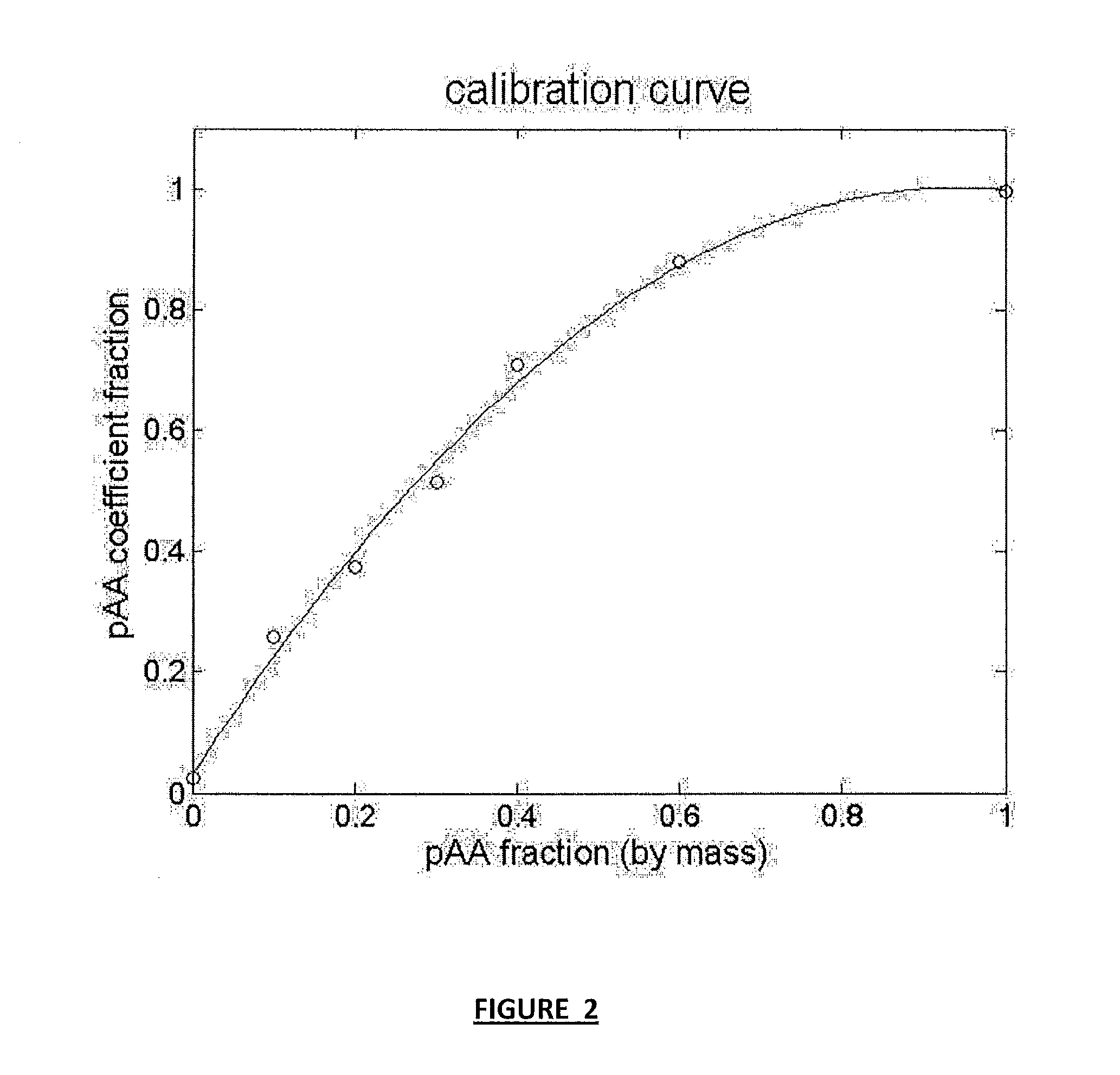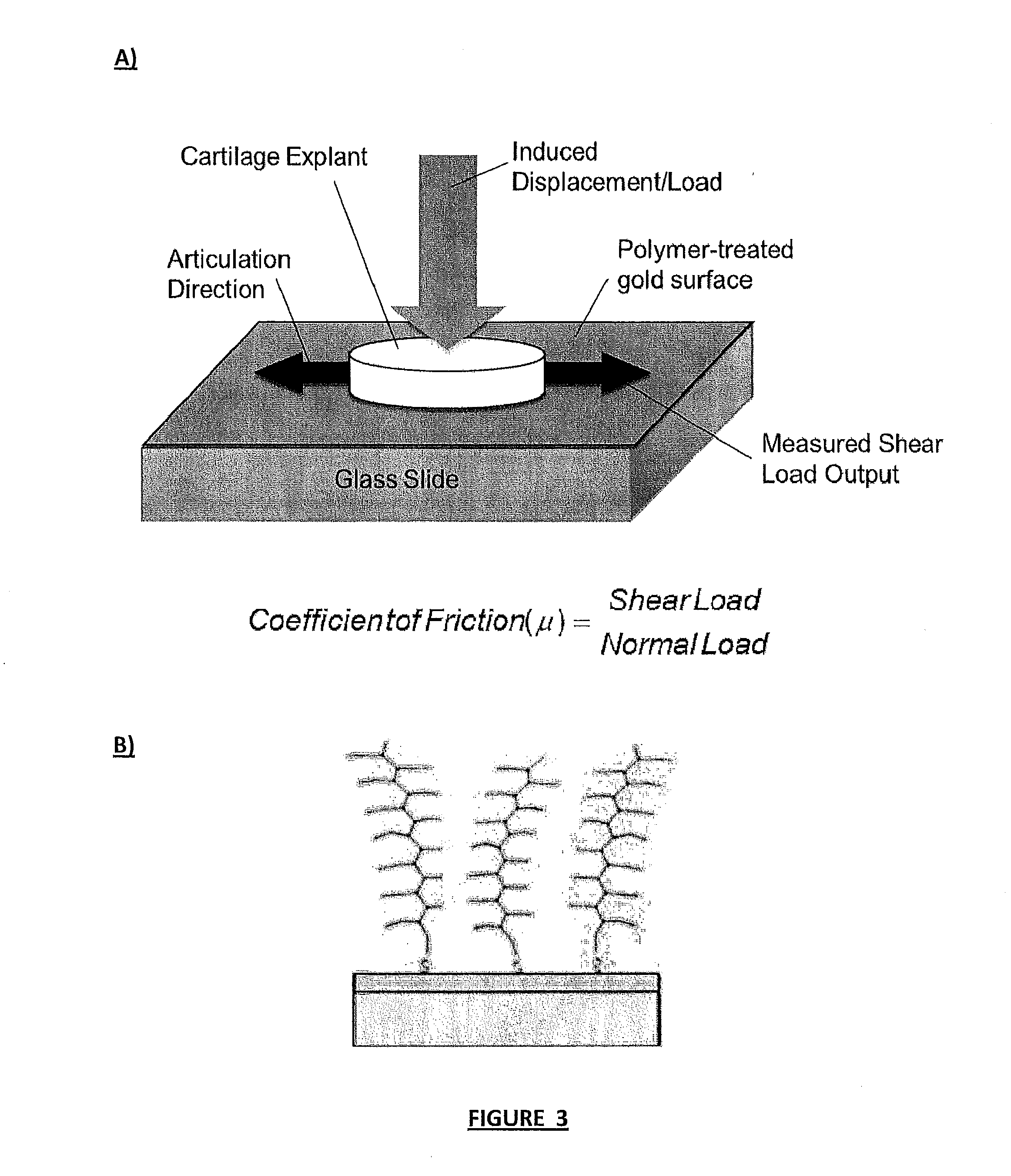Biomimetic boundary lubricants for articular cartilage
a technology of articular cartilage and lubricant, which is applied in the field of biological tissue lubrication methods, can solve the problems of large-scale recombinant manufacture of both lubricin and lub:1 and remains challenging, and achieves the effect of improving the lubrication effect of cartilage and lubricating the surface of cartilag
- Summary
- Abstract
- Description
- Claims
- Application Information
AI Technical Summary
Benefits of technology
Problems solved by technology
Method used
Image
Examples
example 1
Synthesis and Characterization of Polyacrylic Acid Backbone (pAA)
[0055]Methods:
[0056]Polyacrylic acid was synthesized by RAFT polymerization as described [Pelet et al. (2012) Macromol. Chem. Phys. 213:2536-40] using acrylic acid (AA), A-CPA as initiator (I) and CPA-DB as chain transfer agent (CTA) under anhydrous, airtight and dark conditions (FIG. 1A). To scale up, the general reaction conditions were as follows: AA (0.95 ml, 13.8 mmol) was added to a flame dried 5 ml brown ampule with one flea magnet, to which CPA-DB (5.3 mg, 19×10−3 mmol) dissolved in 2.9 ml of nitrogen-purged methanol was added, followed by A-CPA (1.3 mg, 4.63×10−3 mmol) dissolved in 0.7 ml of nitrogen-purged methanol. Nitrogen gas was bubbled through the reaction mixture for several minutes after addition of each reagent to prevent oxygen gas influx. After the last nitrogen purge, the reaction ampule was flamed sealed, placed in a 60° C. oil bath to initiate polymerization and allowed to stir for 48 hours. Upon...
example 2
Synthesis and Characterization of pAA-g-PEG Polymer Brushes
[0061]Methods:
[0062]The pAA-graft-PEG copolymer (pAA-g-PEG) was synthesized by polymer analogous conjugation of monoamine-functionalized PEG to the pAA backbone using DMTMM as the coupling agent based on the procedure of [Pelet et al. (2011) Bioconj. Chem. 22:329-37] and is shown schematically in FIG. 1B. The general reaction was as follows: 107,600 Mn pAA (10 mg, 139 mmol of AA) and 2000 Mn PEG-amine (610 mg, 305 mmol of PEG) were dissolved by stirring in 0.1 M borate buffer (3 ml, pH 8.5) in a 10 ml flask with magnetic stir bar. DMTMM (79 mg, 285 mmol) dissolved in 0.1 M borate buffer (0.6 ml) was added drop-wise to the solution and the pH adjusted to 6-7 using 1 N HCl. The reaction volumes were fixed based on the concentration of pAA being maintained at ˜3.3 g / L, provided the corresponding molar ratios of PEG would dissolve at the corresponding volumes. Otherwise reaction volumes were fixed based on maintaining PEG concen...
example 3
Boundary Lubrication of pAA-g-PEG Against Bovine Cartilage
[0069]Methods:
[0070]Frictional testing was conducted using a custom tribometer designed specifically for cartilage lubrication [Gleghorn et al. (2008) J. Biomech. 41:1910-8]. Using a Varian thermal bell jar evaporator, a 100 nm layer of chrome was deposited on a glass slide followed by a 200 nm gold coating. A 3 mg / ml solution of pAA-g-PEG in PBS was incubated on the gold coated slides for 1-3 days, to form self-assembling monolayers from thiol-gold interactions [Lowe et al. (2002) J. Am. Chem. Soc. 124:11562-3]. Atomic force microscopy (AFM) using a Digital Instruments' Dimension 3100 Atomic Force Microscope was conducted on pAA-g-PEG treated slides in contact mode under semi-hydrated conditions in PBS to observe coverage.
[0071]A six mm diameter cartilage explant was isolated from the patellofemoral grooves of 1-3 day old bovine calves, and denuded in 1.5 M saline solution to strip cartilage of native lubricin. The polymer-t...
PUM
| Property | Measurement | Unit |
|---|---|---|
| molecular weight | aaaaa | aaaaa |
| molecular weight | aaaaa | aaaaa |
| polydispersity index | aaaaa | aaaaa |
Abstract
Description
Claims
Application Information
 Login to View More
Login to View More - R&D
- Intellectual Property
- Life Sciences
- Materials
- Tech Scout
- Unparalleled Data Quality
- Higher Quality Content
- 60% Fewer Hallucinations
Browse by: Latest US Patents, China's latest patents, Technical Efficacy Thesaurus, Application Domain, Technology Topic, Popular Technical Reports.
© 2025 PatSnap. All rights reserved.Legal|Privacy policy|Modern Slavery Act Transparency Statement|Sitemap|About US| Contact US: help@patsnap.com



